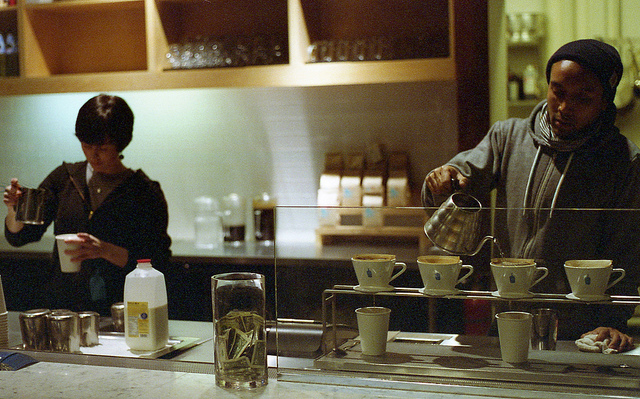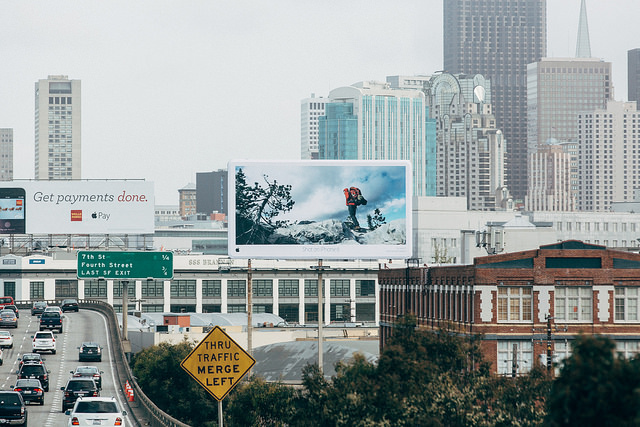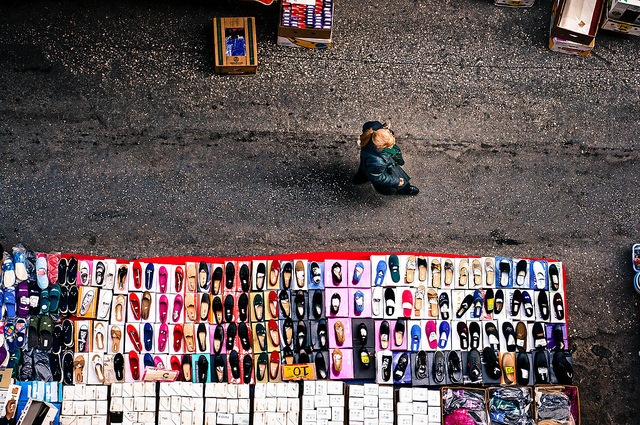Unlock the Magic in Your Story Now
Get the Free 20 questions to Ask Before Launching Your Idea workbook when you sign up for occasional updates.
Get the Free 20 questions to Ask Before Launching Your Idea workbook when you sign up for occasional updates.
Is Brand Storytelling Dead?
filed in Marketing, Storytelling, Strategy
 When Shaun sent through a link to an article declaring ‘storytelling dead’ and asked me to comment, I wasn’t at all surprised to read what followed. The piece suggested that because attention spans are shrinking your customers don’t have time to pay attention to your story.
When Shaun sent through a link to an article declaring ‘storytelling dead’ and asked me to comment, I wasn’t at all surprised to read what followed. The piece suggested that because attention spans are shrinking your customers don’t have time to pay attention to your story.
Here’s a snippet of the rationale that followed:
“…it’s time to stop pinning our marketing and communications strategies around storytelling. Stories take time, and time is our greatest luxury. If most consumers can’t afford the luxury of diving deep into your brand story, is a long-winded narrative about heritage and craftsmanship the right strategy? Of course not. While it ostensibly makes sense to bulk up credibility with character counts, it doesn’t make your audience’s life easier—and at the end of the day, isn’t that we all want?
One final nail in the coffin for storytelling: It can be downright dangerous for your brand. We live in the era of transparency and access, so it’s easier than ever for consumers to sniff out inauthentic back stories and eyebrow-raising claims.”
The author makes a case for a simpler form of marketing, that leaves room from the customer to figure things out for themselves….“No text, no tagline, no storytelling required.”
The article makes two assumptions:
1. Brand stories are long-winded narratives—words that are written, read or spoken.
2. Brand stories are fabrications, false claims or half truths designed to embellish the banal or dupe customers.
If you’ve been reading my blog for a while you already understand that a brand story is more than cleverly crafted copy. A story isn’t something you choose to tell or not to tell. It’s what people believe when they encounter you or your brand, the impressions they form and the assumptions they make at every interaction with you, both in personal and business settings. Customers are making sense of your story even when they aren’t consciously paying attention.
Your brand story, just like Apple’s or Nike’s is communicated, experienced and felt even before you write a single word of copy. Your design choices, products, pricing, packaging, location, user experience, testimonials, the staff you hire and on and on, are all part of that story. Everything you do, every action you take is telling the story. How you articulate your story in words and images is just a tiny part of it.
As long as we humans are in possession of any one of our five senses stories will survive.
We don’t simply tell our brand stories—we live them.
If it’s a story worth telling then you’ve got time.
Image by J-No.
Share this article
The Ideal Customer
filed in Marketing, Storytelling, Strategy

The ideal customer
Doesn’t worry about what the product costs.
Tells her friends about your service.
Gives you her undivided attention.
Would never consider switching.
Always listens when you talk.
Doesn’t question the facts.
Has an abundance of time.
Believes your story.
Shares your values.
Never complains.
Is rational.
Responds.
You’re never marketing to the ideal customer—some carefully crafted avatar with the perfect attitude. Mostly you’re marketing to imperfect human nature.
You give yourself the best chance of succeeding when you take that into account before you start.
Image by Andrew Stawarz
Share this article
What’s Your Customer’s Worldview?
filed in Marketing, Storytelling, Strategy
 It was 10 am and the queue at the cafe serving coffee that’s less than 48 hours out of the roaster was ridiculously long. The line moved impossibly slowly, and yet not a single person left it to go to one of the many cafes that could serve them a forgettable drink in moments. Leaving the line would feel like abandoning their belief about what makes coffee great (and worth waiting for).
It was 10 am and the queue at the cafe serving coffee that’s less than 48 hours out of the roaster was ridiculously long. The line moved impossibly slowly, and yet not a single person left it to go to one of the many cafes that could serve them a forgettable drink in moments. Leaving the line would feel like abandoning their belief about what makes coffee great (and worth waiting for).
Our beliefs influence our thoughts and our feelings, which in turn influence our actions.
As business leaders and marketers we obsess about influencing how people act, often before we fully understand what their motivations are in the first place.
What keeps your customer awake at night?
What does he value?
What does he fear?
What motivates him to act?
What is he unwilling to compromise on?
What else don’t you know about your customer that you should know?
If you don’t understand the customer’s worldview how can you hope to align with or shape it?
Image by Scott Beale.
Share this article
The Most Important Lens We Have
 As business owners and team leaders we view our businesses through various lenses. We have a financial lens, a success lens, a marketing lens, a service lens and on and on depending on how complex our organisation is.
As business owners and team leaders we view our businesses through various lenses. We have a financial lens, a success lens, a marketing lens, a service lens and on and on depending on how complex our organisation is.
We measure our performance in a hundred different ways, often neglecting the most significant metric of all—customer worthiness. This is the most important lens we can apply, the most accurate measurement of meaningful work.
When everything you do is framed by the question;
‘Is this product or service worthy of my customer and why?’ it changes everything.
Image by Chun-Hung Eric Cheng.
Share this article
The Purpose Of A Billboard
filed in Marketing, Storytelling, Strategy
 The purpose of a billboard is to interrupt as many people as possible, to create awareness not necessarily impact, to broadcast instead of engage.
The purpose of a billboard is to interrupt as many people as possible, to create awareness not necessarily impact, to broadcast instead of engage.
I’ve passed a lot of forgettable billboards, pleading from the side of highways on my travels this week—maybe you have too. The only ones that left any kind of impact were part of Apple’s stunning user created ‘Shot on iPhone 6’ campaign. The marketing works despite the medium, because the billboard doesn’t tell us what the product can do, the images show us who we might become in its presence. We are moved by them because they tell the user’s, and not the company’s story. No description of features and benefits required.
Powerful marketing is both smart and generous, we know it when we experience it, because it changes how we feel and gives us a story to tell. Weak marketing is obvious and selfish, we know that when we see or hear it, because it screams ‘LOOK AT ME!’ and leaves us cold.
We might not be Apple, but we each have more power to connect with and impact people than a billboard can, how we use it is a choice.
When our marketing changes how people feel and holds a mirror up to the customer—telling their story, not ours, we’re on the right track.
Image by kind permission of gifted photographer Julian Bialowas. His photo is featured here in the iPhone 6 campaign.
Share this article
Traditional Marketing Vs. New Marketing
filed in Marketing, Storytelling, Strategy
 We recoil from the traditional marketing tactics that we are exposed to every day. We install ad blockers and put up barriers that help us to keep interruptions at bay. We recognise poorly thought out marketing strategies in a heartbeat, and yet when it comes to marketing our own products and services we often fall into the trap of using those terrible tactics (or some version of them) ourselves.
We recoil from the traditional marketing tactics that we are exposed to every day. We install ad blockers and put up barriers that help us to keep interruptions at bay. We recognise poorly thought out marketing strategies in a heartbeat, and yet when it comes to marketing our own products and services we often fall into the trap of using those terrible tactics (or some version of them) ourselves.
We have two choices:
TRADITIONAL MARKETING = MAKE SOMETHING + MAKE PEOPLE LOVE IT
Or…
NEW MARKETING = LOVE PEOPLE + MAKE SOMETHING THEY LOVE
It seems easier in the moment to adopt a ‘traditional marketing’ mindset—to create, run on ahead and talk about ourselves instead of first understanding the customer’s worldview. Listening is hard. Knowing what to pay attention to is harder. It takes both commitment and practice, but when you choose ‘new marketing’ you’ll find you’ve created something worth paying attention to.
Image by Spyros Papaspyropoulos.
Share this article
Amplify The Good
filed in Marketing, Storytelling, Strategy
 As soon as she handed the keycard for the upgraded room to the formerly disgruntled (now beaming) guest, the receptionist smiled and handed her a second card. Her eyes held those of the woman who had been complaining loudly only five minutes before.
As soon as she handed the keycard for the upgraded room to the formerly disgruntled (now beaming) guest, the receptionist smiled and handed her a second card. Her eyes held those of the woman who had been complaining loudly only five minutes before.
“Would you please consider giving us a review on Trip Advisor, the website details are on this card?
Thanks so much, it means a lot to us.”
We spend a lot of resources fighting fires, dealing with unrealistic or unfulfilled expectations and yet we do virtually nothing to help cement the great experiences we deliver to customers all the time.
When we begin enabling and amplifying the good we create an environment that facilitates customer delight. When proactively nurture post positive interactions our posture shifts—instead of looking for ways to fight fires we seek out opportunities to fill our buckets with water.
It’s far easier to fight fires if the water buckets are half full before you start.
Image by Georgette Tan.
Share this article
Reasons To Choose
filed in Marketing, Storytelling, Strategy
 Reasons are at the heart of all marketing.
Reasons are at the heart of all marketing.
Our marketing aims to give people reasons to choose—an explanation or a nudge about why they should buy. The biggest mistake we make is failing to match our reasons with the potential customer’s motivations.
Your most important job as a marketer isn’t to tell people why they should buy—it’s to find out where they want to go and to take them there.
Image by Vern.
Share this article
Betting On Maybe
filed in Marketing, Storytelling, Strategy
 There are many reasons why Melbourne has been crowned World’s Most Liveable City four years running—great coffee is just one. It’s impossible to walk a hundred metres in any direction without stumbling on a place to grab a ‘good enough’ macchiato, so there’s a lot of competition in the coffee business and no shortage of new operators entering the fray.
There are many reasons why Melbourne has been crowned World’s Most Liveable City four years running—great coffee is just one. It’s impossible to walk a hundred metres in any direction without stumbling on a place to grab a ‘good enough’ macchiato, so there’s a lot of competition in the coffee business and no shortage of new operators entering the fray.
In the suburb where I live cafes line both sides of the street—some so close they literally touch each other. So I was surprised to see two new white tables and a set of blue stools appear unannounced on the pavement, beyond where the shopping strip ends last Monday morning. Unused cups, stacked high on the pristine coffee machine were visible from gleaming windows, as were the two business owners who peered out hopefully at every passer by willing them to come in and give the cafe a try. Maybe they will and maybe they won’t. It’s only a maybe because these passers by don’t have a coffee problem. There is no reason to switch from the Albert Park Deli that’s been going for forty years, or the place on the corner with more room inside and out, complete with shade, heaters and blankets for frigid winter days.
The new cafe owners have fallen into the ‘build first, sell later’ trap and now they are forced to come up with a marketing plan to attract people— a story that makes more people want what they sell. This strategy might work well if you’re creating a minimum viable product like an app that requires a small bet to test and then refine, but the Lean Startup methodology is harder to apply to a business like a cafe where there’s a significant investment up front. A two year lease isn’t easy to pivot.
Contrast this shiny, new, empty cafe story to the one of the vegetarian, organic wholefood, (only raw treats sold here) cafe that opened a couple of months before. They don’t just sell fair trade coffee, they sell a story to people with a particular worldview.
So what should the blue stool owners do now beyond stand there looking terrified and hopeful in spotless aprons? They must start thinking less about ‘what’ they sell, and more ‘who for’. Then they need to give that specific person (not everyone) a reason to want to come inside and a story to believe in and share. Because freshly roasted coffee beans do not make or break a cafe in a world where good is a given.
A cafe is not just a place to sit, where drinks are served. It’s more than tables and chairs, croissants and raspberry chocolate chip muffins. A cafe is a feeling we want to experience. Whatever we spend our money on, from a song to a donation tells us something about who we are and what matters to us, and even a $4 coffee needs a story about ritual or community, sustainability or quality, convenience or indulgence, that we can buy into.
Image by Dorte.
 It was just a short internal flight, you barely enough time to get comfortable in your seat—46 minutes to be exact. That didn’t stop the guy who had mistakenly been ‘downgraded’ from business class to economy from blowing a gasket. He complained loudly, his finger stabbing in the direction of the gate agent’s face, while his own became redder by the second. The gate agent calmly repeated the bad news and apologised courteously as he’d been trained to do. There really was nothing else to be done. Facing the choice of flying economy or not at all, the business traveller had to accept his fate.
It was just a short internal flight, you barely enough time to get comfortable in your seat—46 minutes to be exact. That didn’t stop the guy who had mistakenly been ‘downgraded’ from business class to economy from blowing a gasket. He complained loudly, his finger stabbing in the direction of the gate agent’s face, while his own became redder by the second. The gate agent calmly repeated the bad news and apologised courteously as he’d been trained to do. There really was nothing else to be done. Facing the choice of flying economy or not at all, the business traveller had to accept his fate.